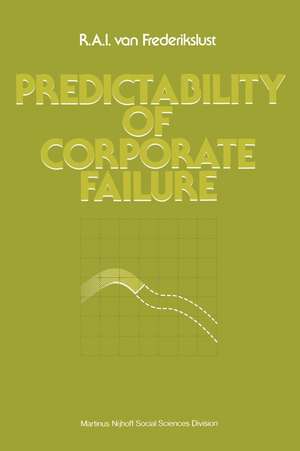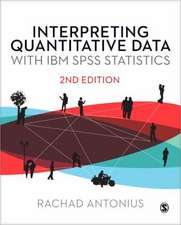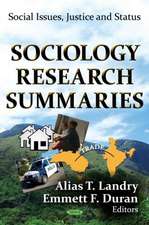Predictability of corporate failure: Models for prediction of corporate failure and for evalution of debt capacity
Autor R.A.I. van Frederikslusten Limba Engleză Paperback – 2 apr 2012
Preț: 378.34 lei
Nou
Puncte Express: 568
Preț estimativ în valută:
72.40€ • 77.42$ • 60.36£
72.40€ • 77.42$ • 60.36£
Carte tipărită la comandă
Livrare economică 18 aprilie-02 mai
Preluare comenzi: 021 569.72.76
Specificații
ISBN-13: 9781468471939
ISBN-10: 1468471937
Pagini: 132
Ilustrații: 121 p.
Dimensiuni: 152 x 229 x 7 mm
Greutate: 0.19 kg
Ediția:Softcover reprint of the original 1st ed. 1978
Editura: Springer Us
Colecția Springer
Locul publicării:New York, NY, United States
ISBN-10: 1468471937
Pagini: 132
Ilustrații: 121 p.
Dimensiuni: 152 x 229 x 7 mm
Greutate: 0.19 kg
Ediția:Softcover reprint of the original 1st ed. 1978
Editura: Springer Us
Colecția Springer
Locul publicării:New York, NY, United States
Public țintă
ResearchCuprins
1. Introduction..- 1.0 Introduction.- 1.1 The Concept of Failure.- 1.2 Aim and Outline of the Study.- 2. Recent Studies..- 2.0 Introduction.- 2.1 Discriminant Analysis and the Prediction of Corporate Failure.- 2.2 Usual Foundations for the Choice of used Ratios.- 2.3 A Univariate Model.- 2.4 Multivariate Models.- 2.5 Evaluation.- 3. A Failure Prediction Model With Financial Ratios as Prediction Variables..- 3.0 Introduction..- 3.1 Donaldson’s Approach.- 3.2 A Definition of Failure in Terms of Cash Flow Concepts.- 3.3 Choice of a Failure Prediction Model...- 3.4 Identification of Prediction Variables of the Failure Prediction Model..- 4. The Failure Prediction Model With The Levels of Ratios as Prediction Variables..- 4.0 Introduction.- 4.1 Sample Design and Data.- 4.2 The Prediction Equations.- 5. A Failure Prediction Model With The Developments of Ratios over Time as Prediction Variables..- 5.0 Introduction.- 5.1 The Variables of the Model.- 6. The Fitted Failure Prediction Model With The Developments of Ratios over Time as Prediction Variables..- 6.0 Introduction.- 6.1 Sample Data.- 6.2 The Prediction Equations.- 6.3 Comparison of the Prediction Quality of the Level-variables Model with the Level-and Trend-variables Model.- 7. Practical use of Failure Prediction Models in Lending Decisions..- 7.0 Introduction.- 7.1 Subjective Expectations.- 7.2 Bayes’Theorem.- 7.3 Lending Decisions.- 8. Value of Information From a Failure Prediction Model..- 8.0 Introduction.- 8.1 Value of Information.- 8.2 The Relationship between the expected Loss of Three Lending Decision Models.- 8.3 Application of Two Discriminant Models in Lending Decisions.- 9. Summary and Conclusions.- APPENDIX 1: Sample Listing.- APPENDIX 2: Prediction Performance of the Model in later Years. ..- APPENDIX3: Secondary Sample Listing.- REFERENCES.













